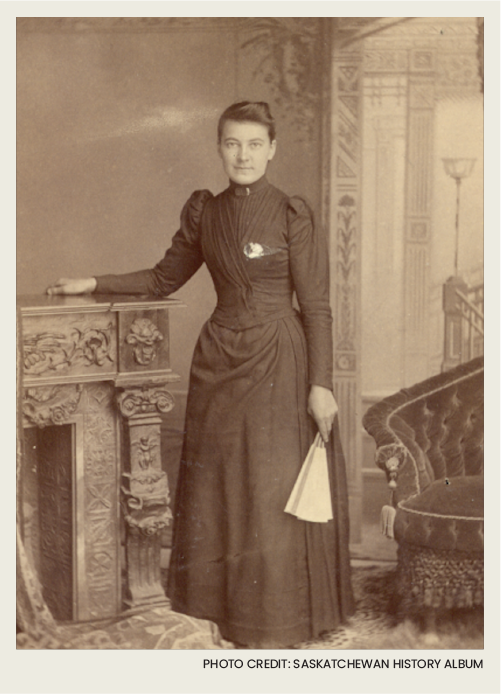Clothing
Overview
Settlers of Saskatchewan arrived with very few items, except what they had in their trunks and what was on their backs. Most of the settlers did not have many clothes and it was too expensive to buy them. Settlers saved money by buying fabric at the general store and making their own clothing items. Looking after the clothes was a lot of work for settler women, as they had to mend, make soap, wash, dry, and iron all of their clothing.

PHOTO CREDIT: SASKATCHEWAN HISTORY ALBUM
This photo taken in 1930 is showing a group of women that are dressed up in clothing that would be saved for special occasions.
Making Fabric
Linen cloth was made from the flax plant. The stems of the flax plant were soaked and separated into strands which were spun into thread. The threads were dyed and then made into linen cloth on a loom.
It was a lot of work and took many steps to make clothing from wool, which comes from sheep. Every family member helped. Children helped with the cleaning, teasing, and carding of the wool. A sharp knife (or large scissors) was used to cut the wool from the sheep, this step was called ‘sheep shearing’.
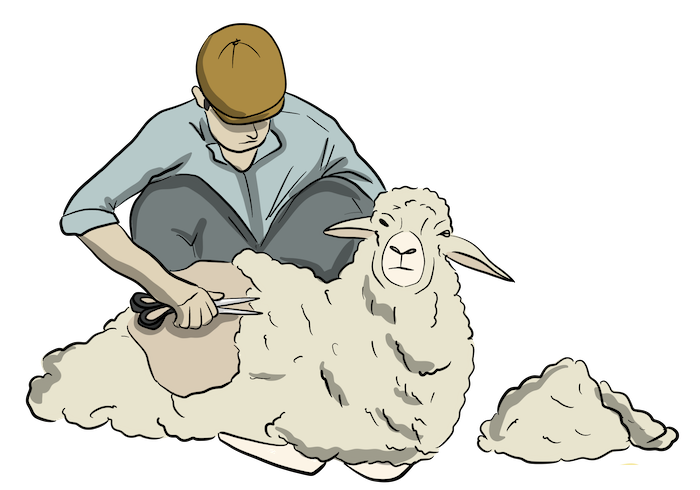
With a lot of work, clothing could be made from wool that comes from sheep.
The next step was cleaning the wool. It had to be washed to clean off the dirt and the oil from the sheep’s skin. The wool was then teased, pulled apart to pick out grass, straw, and burrs that were stuck to it.
Carding was the next step, which was when the wool was brushed to untangle it and get out the knots. Then a spinning wheel was used to make the yarn. Strands of wool fibre were twisted around each other and spun into yarn. The yarn was wound around a spool.
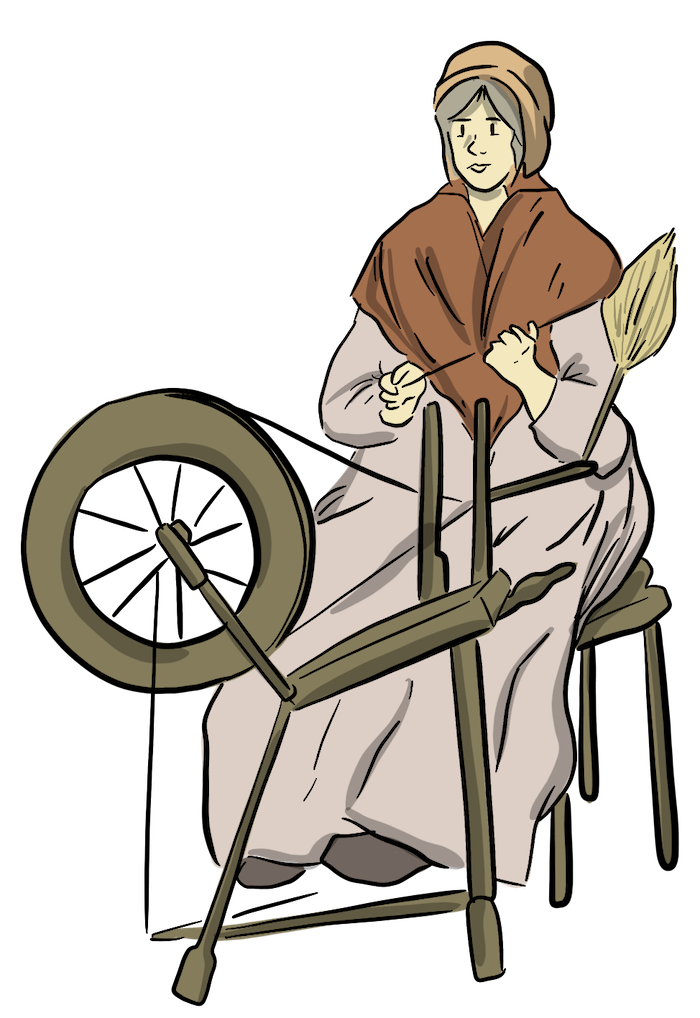
A spinning wheel is used to spin wool into yarn. It is also used to spin flax strands into thread.
Finally, they were able to weave the wool. Cloth was made by weaving the yarn together on a loom.
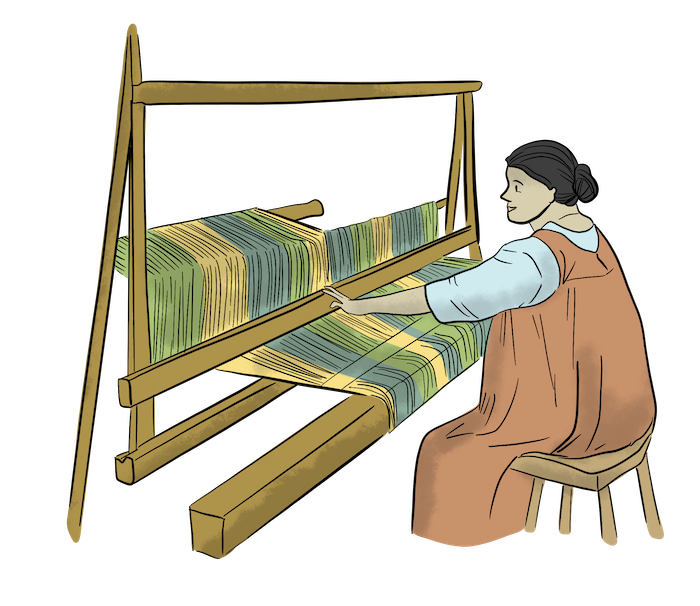
A loom is used to make threads into linen cloth.
Linen could be made from sheep’s wool by using a spinning wheel and a loom.
Making Clothing
Most of the early settlers did not have many clothes. The settlers made a lot their own clothing from woolen cloth and linen fabric. By the 1890s, sewing machines were available to people to buy for their homes. Fabric could be bought at the general store if the settlers had enough money. Otherwise, they had to make their own fabric.
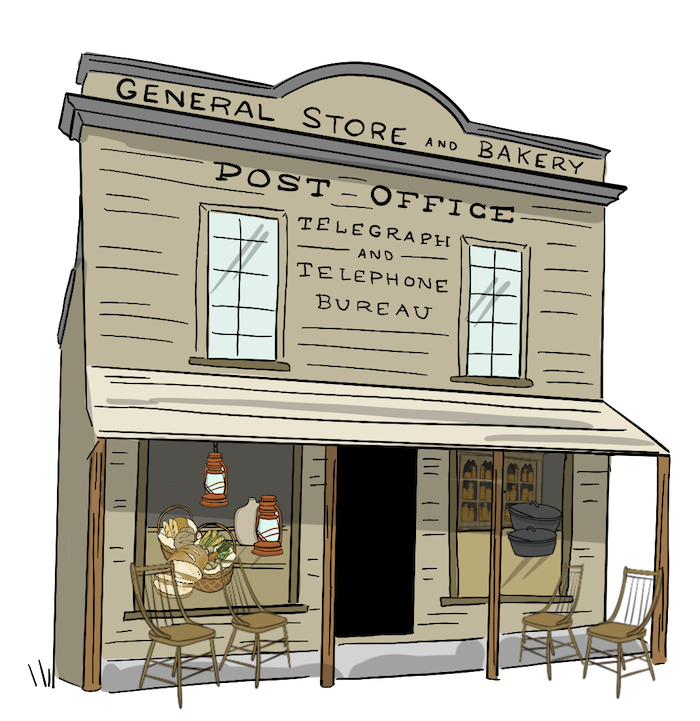
Settlers could buy the supplies they needed to make their own clothes from the general store in town.
Clothing made from wool or linen was not very colourful. The yarn or cloth could be dyed different colours by using bark, nuts, roots, leaves, flowers, and berries to make the dye. Sometimes the yarn was dyed before it was woven into cloth so there would be more than one colour in the woven cloth.
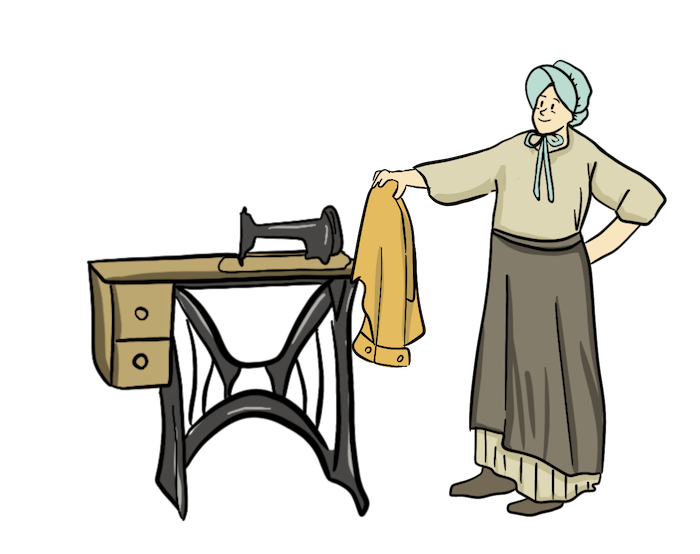
The settler woman is using a sewing machine to make a shirt out of fabric.
Clothing was also made from skins (hides) of animals like deer and rabbit. The skins were made into leather. Coats, shoes, hats, and men’s pants were some of the items made from leather.
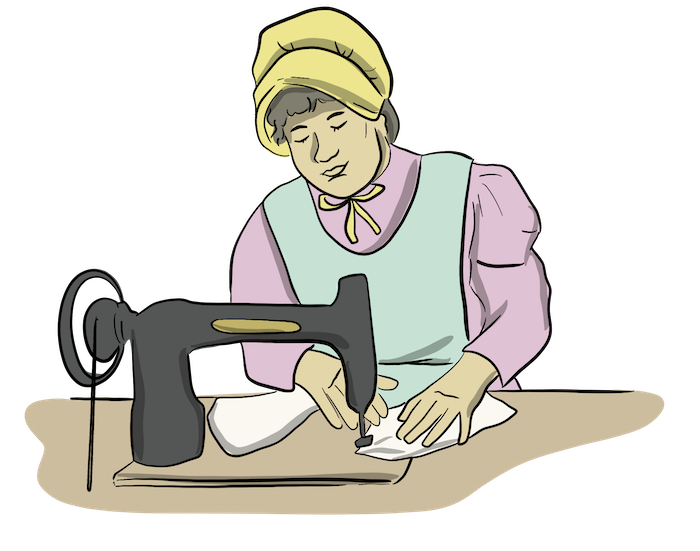
The settlers made most of their clothes using a sewing machine.
Women made their own sewing patterns and remade clothing to fit the next person who wore it. Clothing that could no longer be used was made into quilts, cut in strips, and made into rugs for the floor or used as rags for washing the dishes and floors.
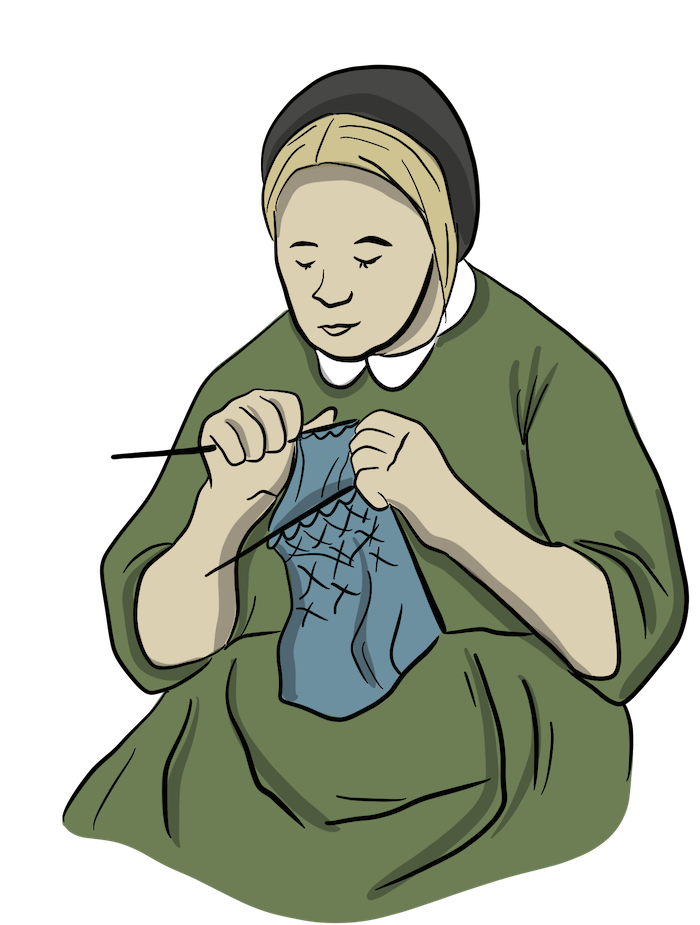
This woman is knitting a scarf to help stay warm in the winter.
The long dresses that the women and girls wore were made of the cloth that was made themselves. An apron covered the dress to protect it and make it last longer.
Types of Clothing
In the early days, women had to be able to sew. Most of the clothes that the settlers wore were homemade. People did not have many clothes and could not afford store-bought clothes. For everyday wear they had work clothes. They also had an outfit for church and special occasions. Clothing was never thrown away but handed down to younger brothers and sisters.

PHOTO CREDIT: SASKATCHEWAN HISTORY ALBUM
Clothing was passed down from older children to younger siblings.
Women and girls wore long dresses with long sleeves. They had petticoats (which added shape and warmth to their dresses) under their dresses and wore aprons to protect their dresses when they worked. The apron was also used to carry things like vegetables, wood, or eggs. A full apron was called a ‘pinafore’. Some pinafores had frills on the straps or along the bottom of the apron.
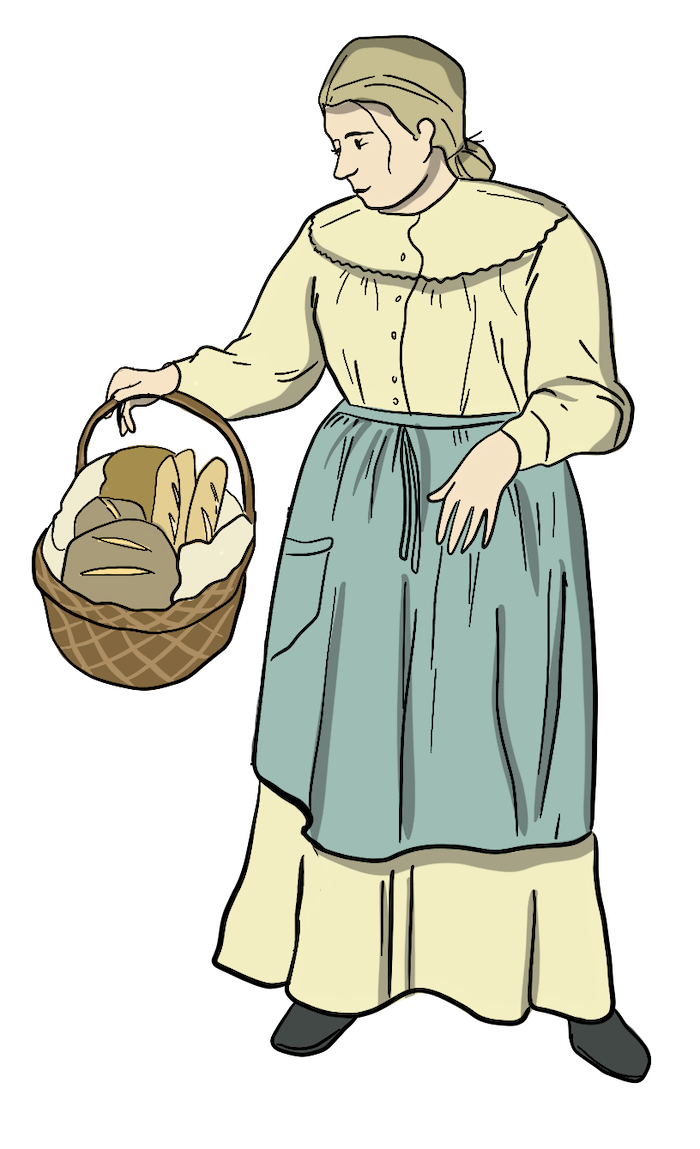
Women and girls wore aprons to protect their dresses while they worked and also to carry things in it.
Bonnets with wide brims protected women’s heads from the sun. For footwear they wore long stockings and shoes that laced up. In very cold weather they wore two dresses or extra petticoats under a dress.
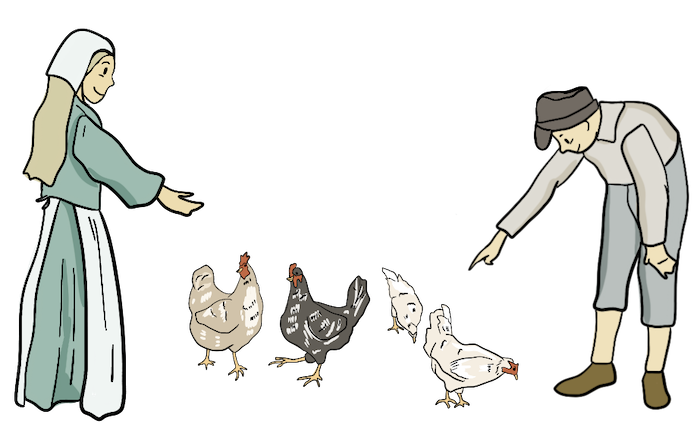
Girls wore long sleeve dresses and aprons, while boys wore pants and shirts with long sleeves.
The work clothes for men and boys were pants with suspenders and long-sleeved shirts. For protection from the sun they wore straw hats. On very cold days the men also wore woolen underwear. For special occasions, the men might have a suit jacket, trousers, vest, a good shirt, and a felt hat.
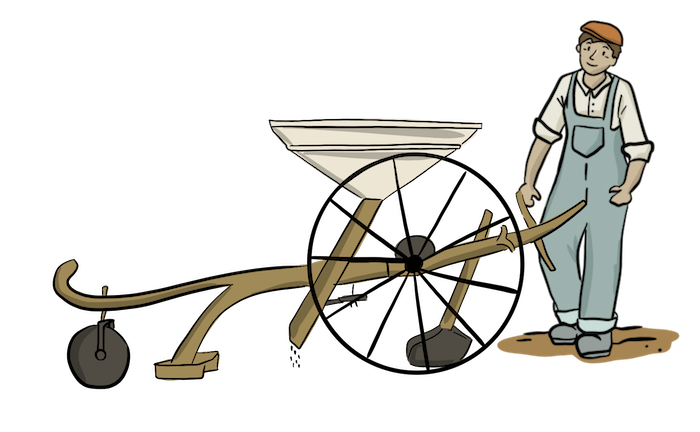
The work clothes for men and boys were pants with suspenders and long-sleeved shirts.







